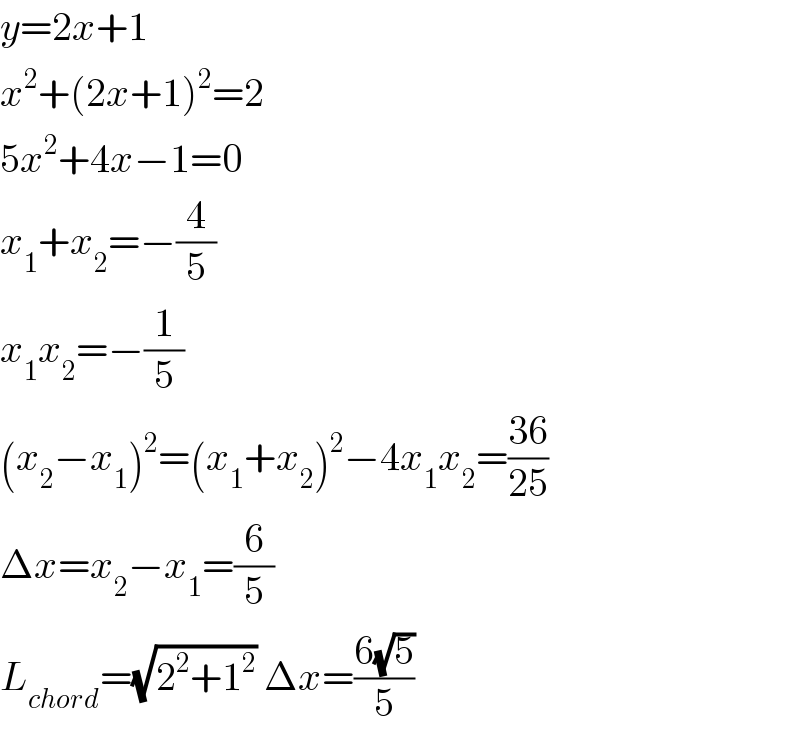
Question and Answers Forum
Question Number 98098 by bobhans last updated on 11/Jun/20

Answered by john santu last updated on 11/Jun/20

Commented by john santu last updated on 11/Jun/20
![A^⌢ B^⌢ = ∫_(−1) ^(0.2) (√(1+((dy/dx))^2 )) dx ⇔(d/dx) [ x^2 +y^2 = 2 ] 2x + 2yy ′ = 0 ; y′ = −(x/y) (y′)^2 = (x^2 /(2−x^2 )) . A^⌢ B^⌢ = ∫_(−1) ^(0.2) (√(1+(x^2 /(2−x^2 )))) dx = ∫_(−1) ^(0.2) (√(2/(2−x^2 ))) dx = (√2) ∫_(−1) ^(0.2) (dx/(√(2−x^2 ))) set x = (√2) sin t [ ∫ (((√2) cos t dt)/(√(2(1−sin^2 t)))) = sin^(−1) ((x/(√2))) ] then A^⌢ B^⌢ = (√2) [ sin^(−1) ((x/(√2))) ]_(−1) ^(0.2) = (√2) (sin^(−1) ((1/(5(√2))))+(π/4) )](Q98103.png)
Answered by mr W last updated on 11/Jun/20

Commented by bobhans last updated on 11/Jun/20

Answered by 1549442205 last updated on 11/Jun/20

